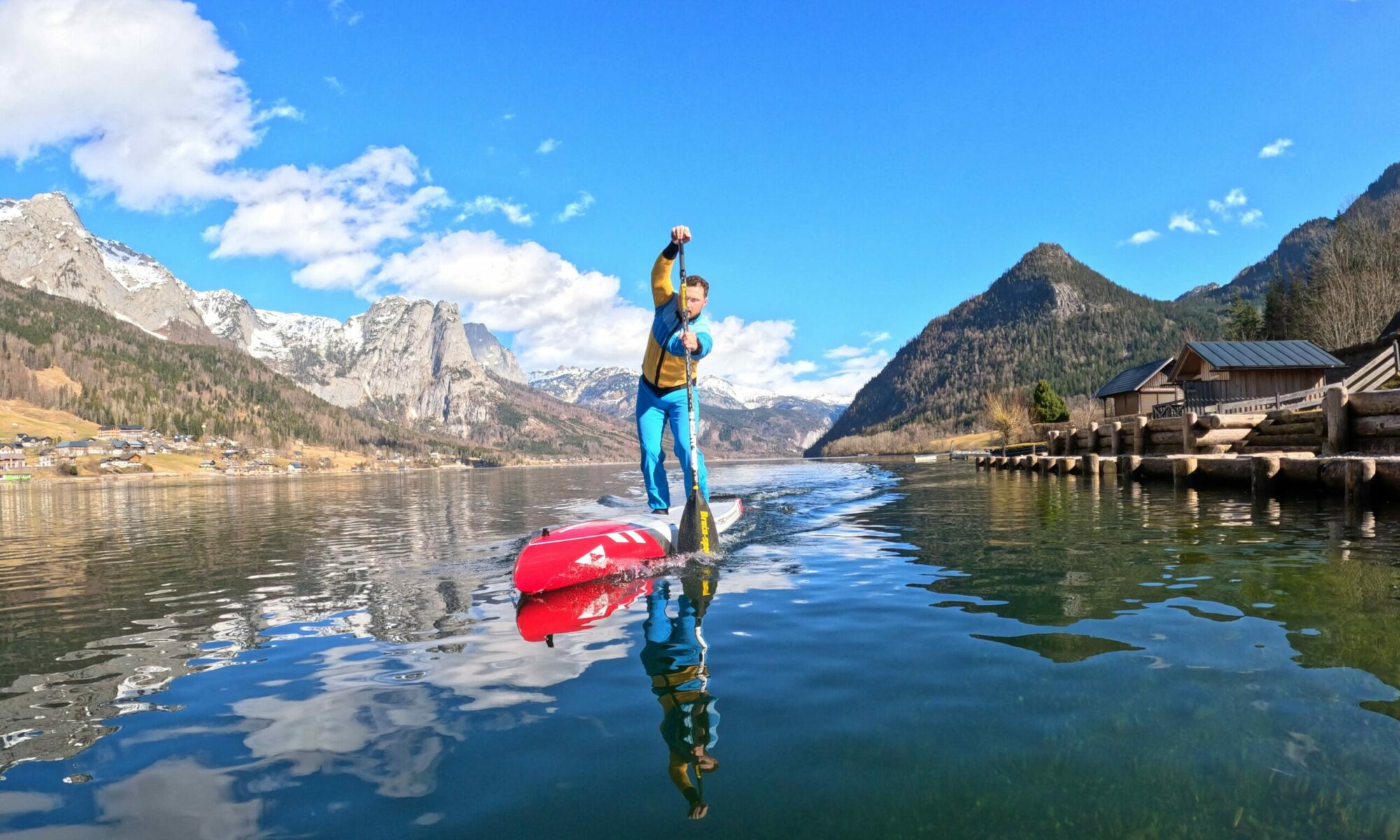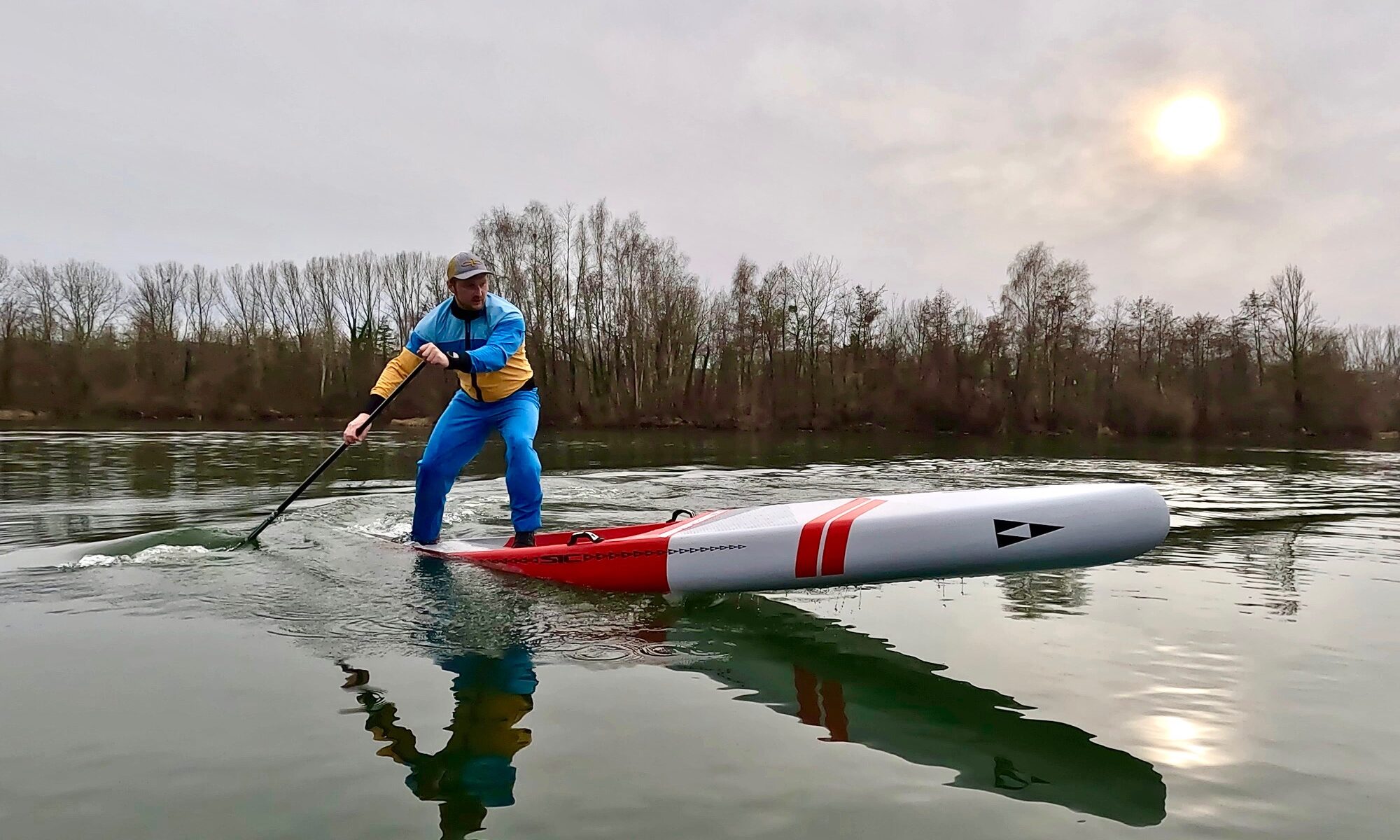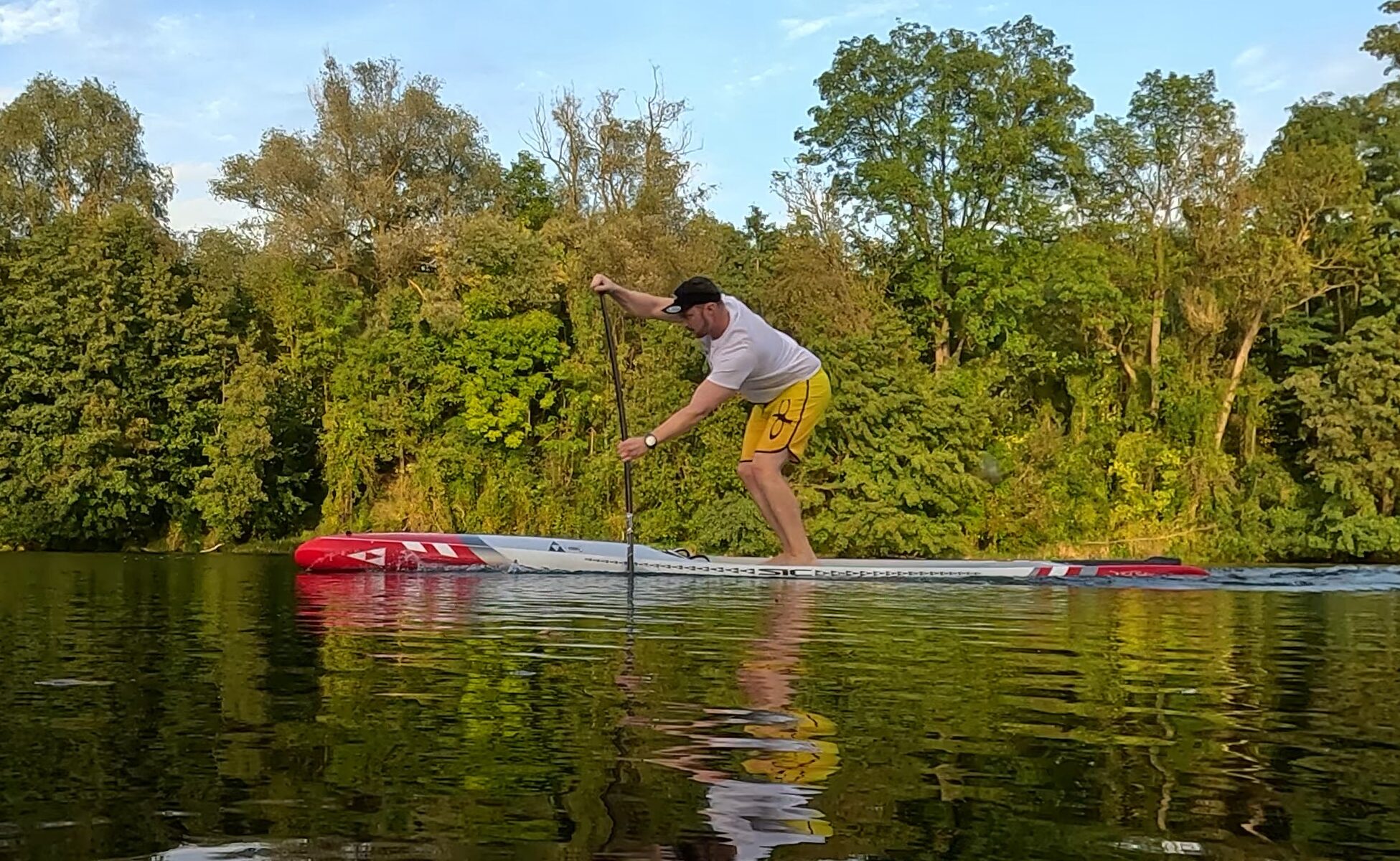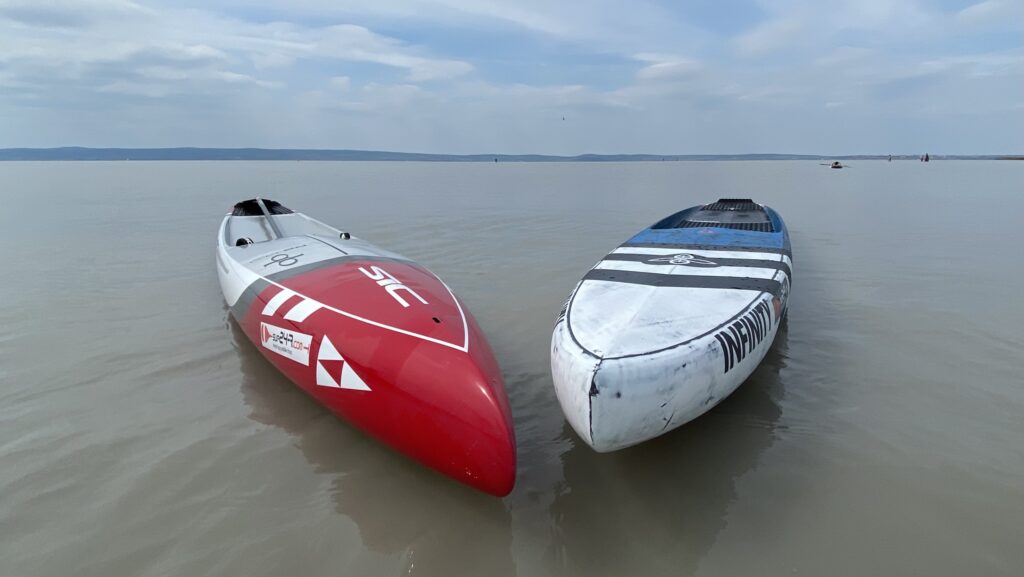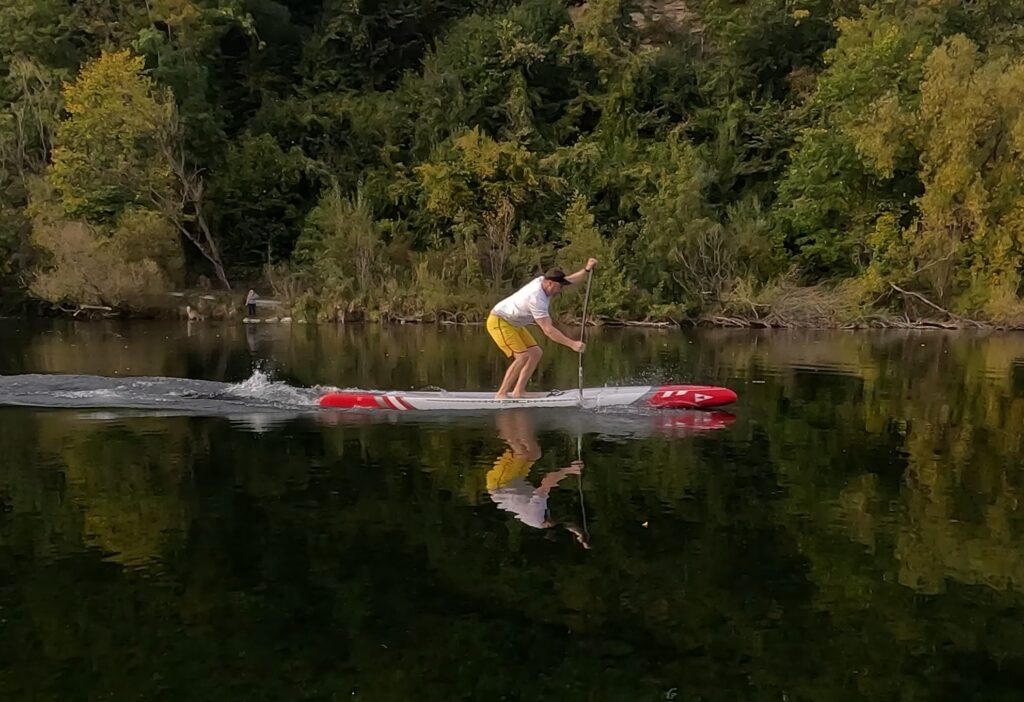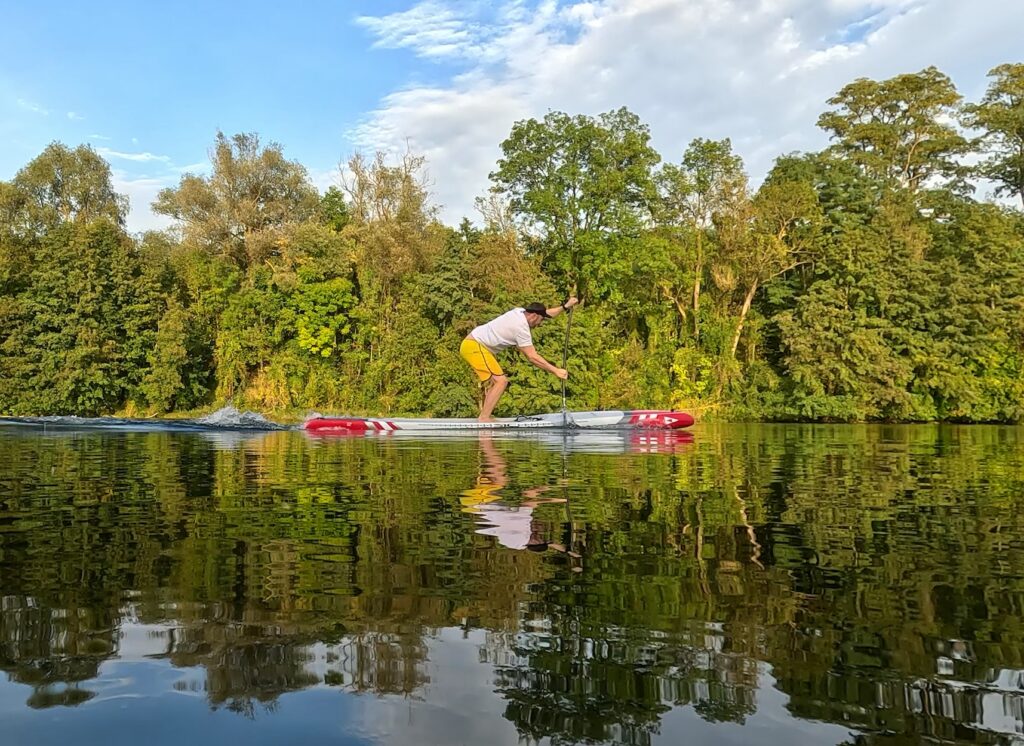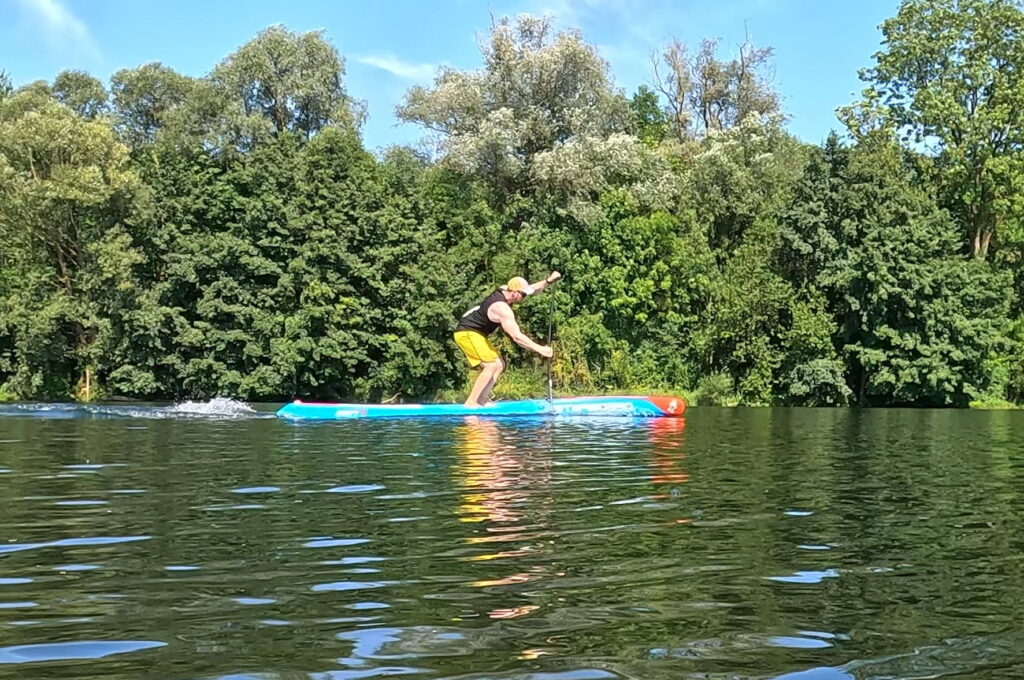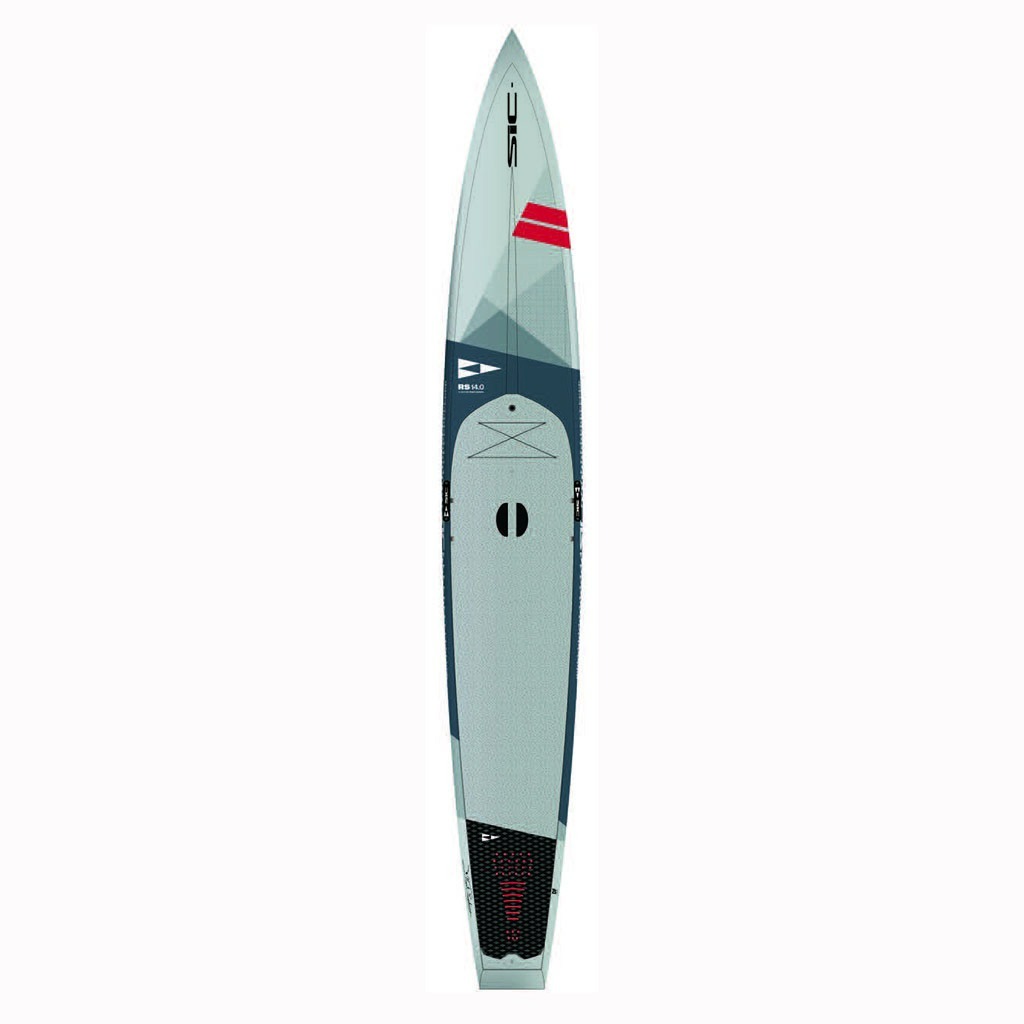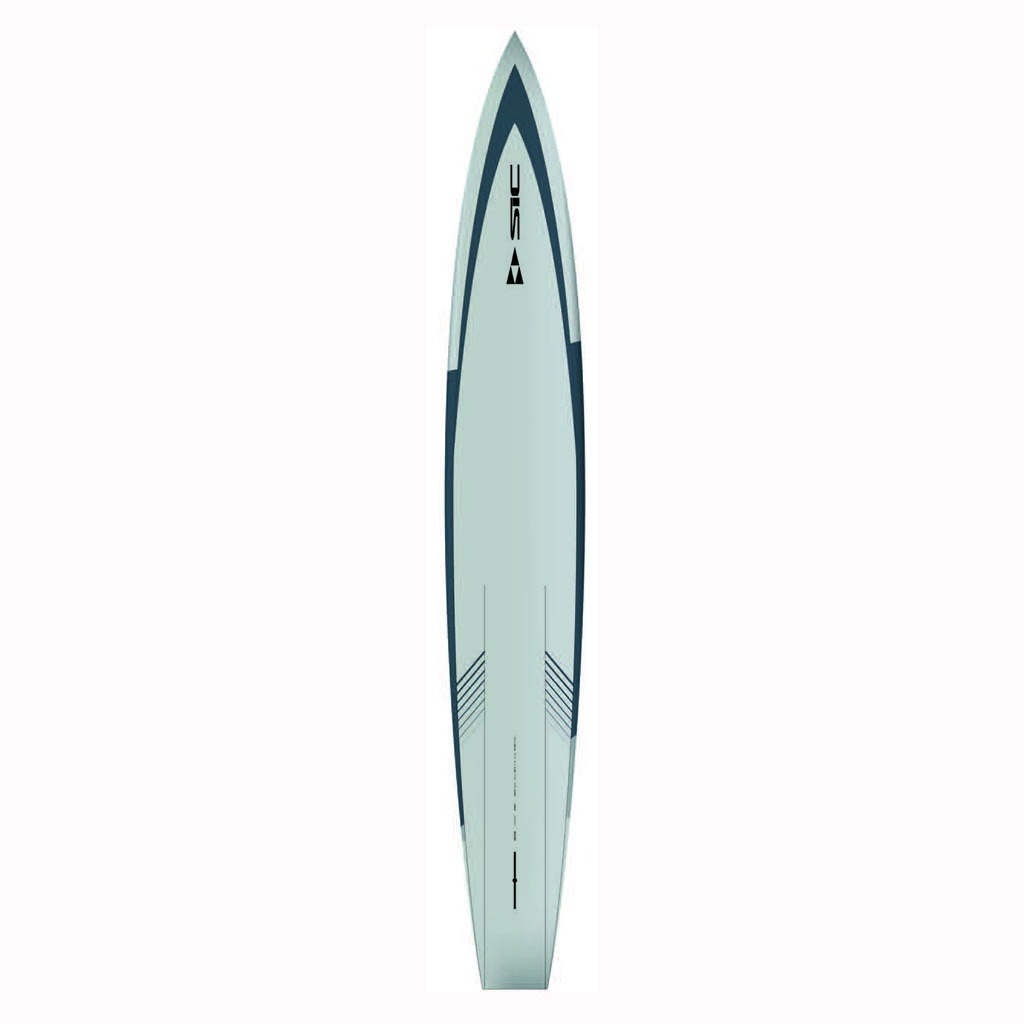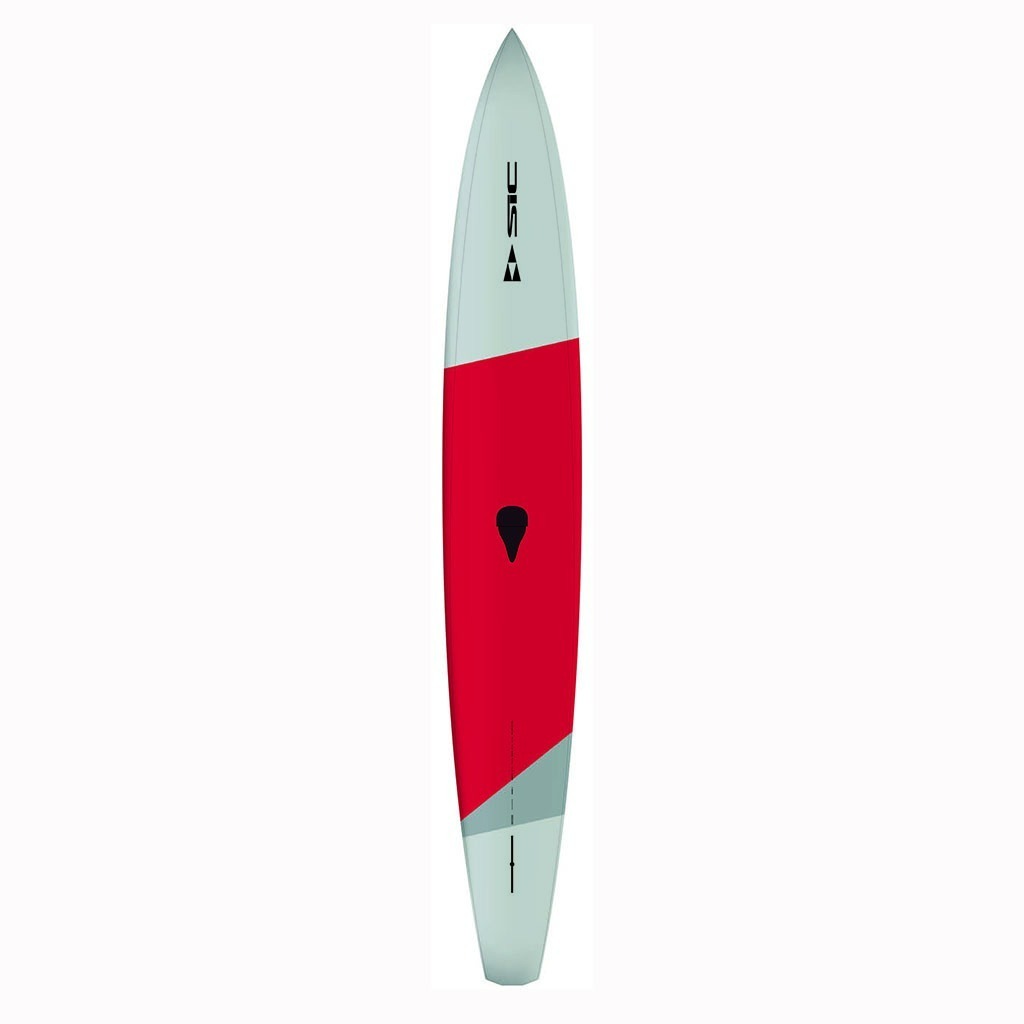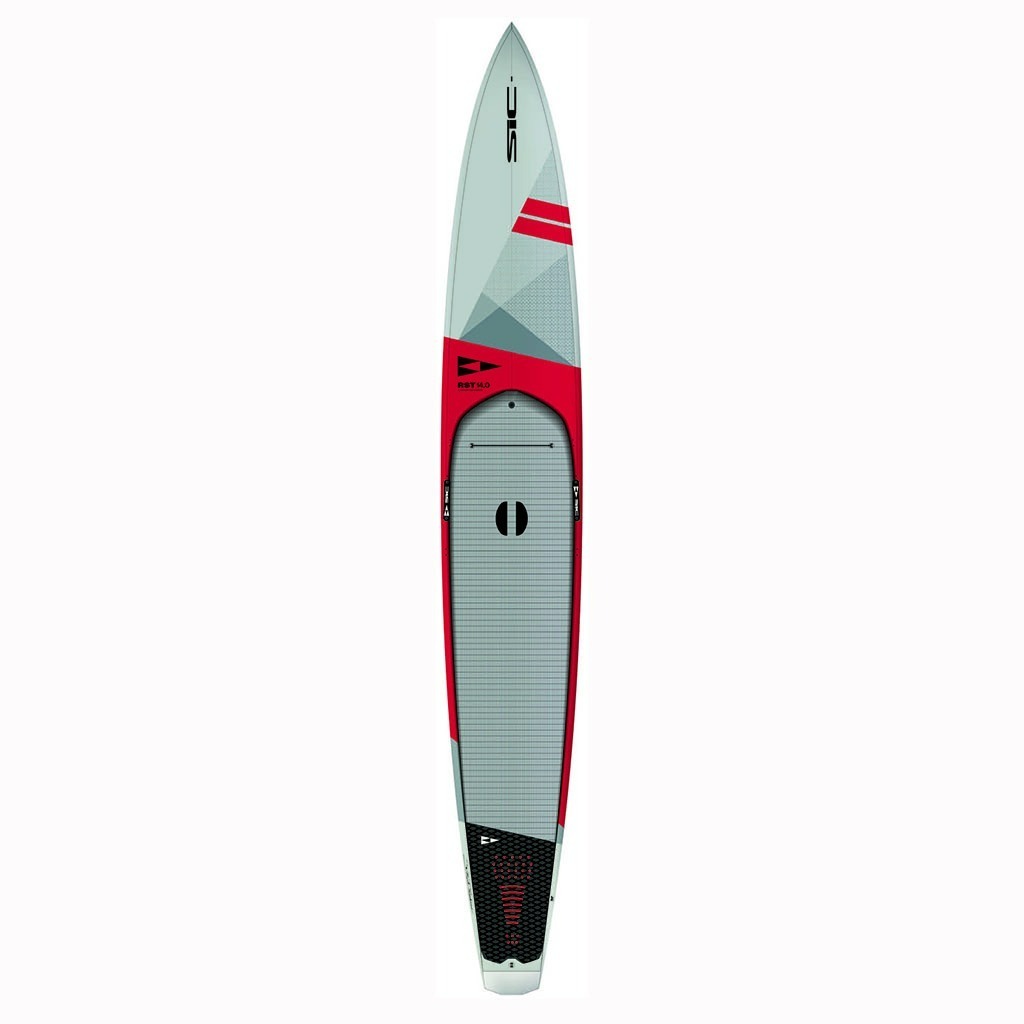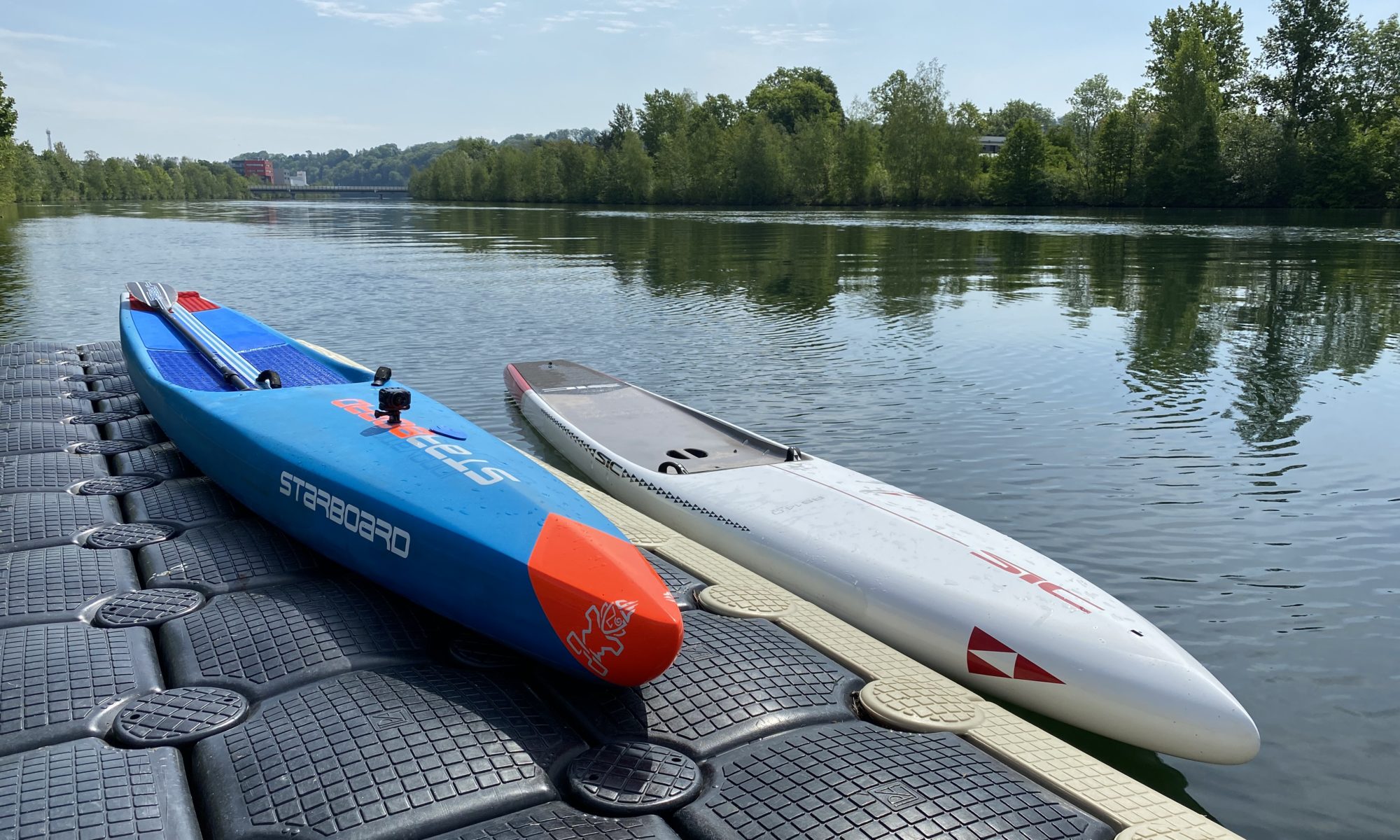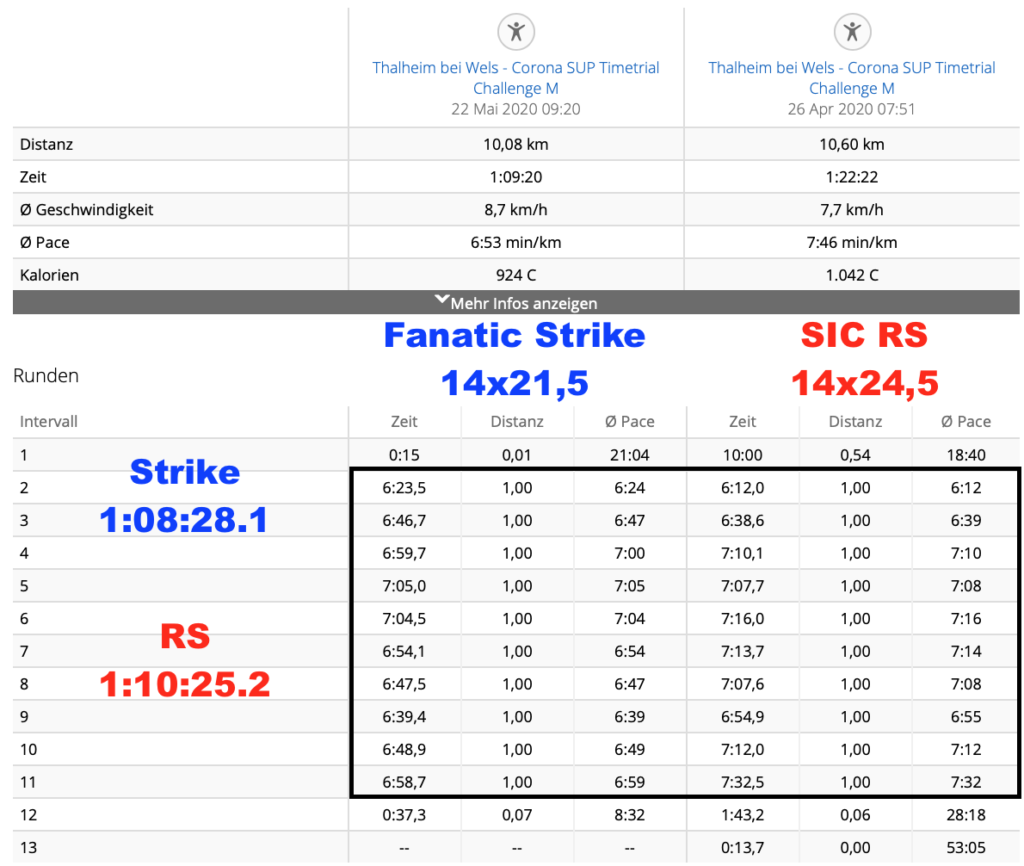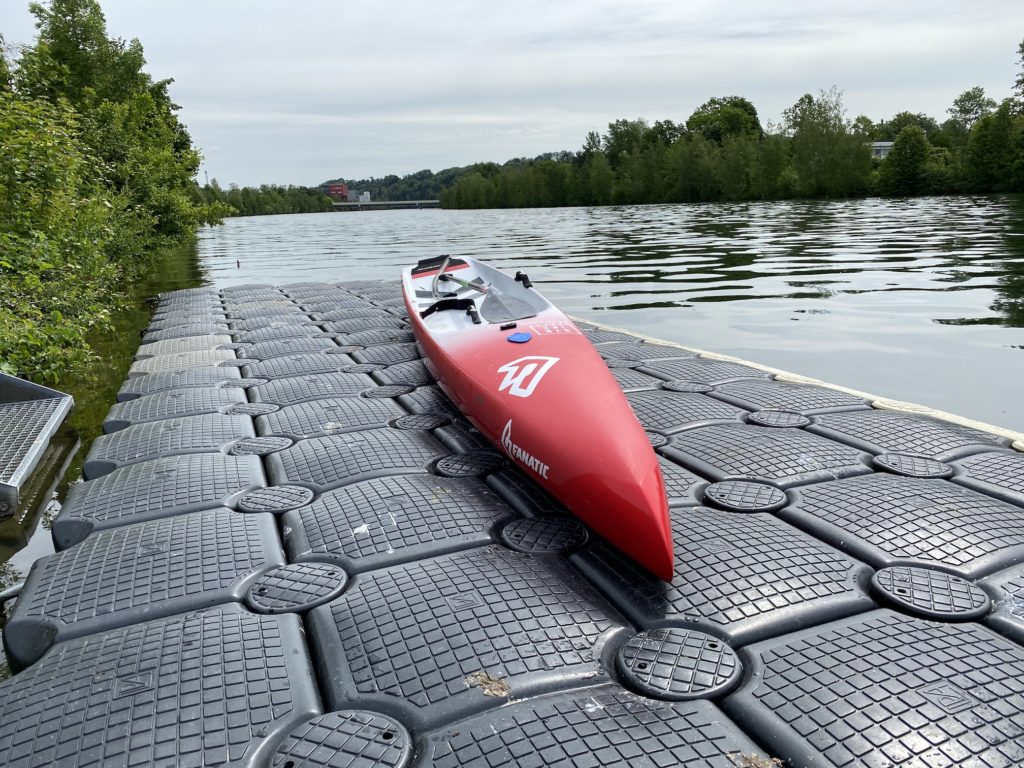Raceboards, ready and easy to use – könnte das Mantra bisheriger SIC Raceboards lauten und soviel vorab… auch das RST stellt hierbei keine Ausnahme dar.
UND das ist gut so!
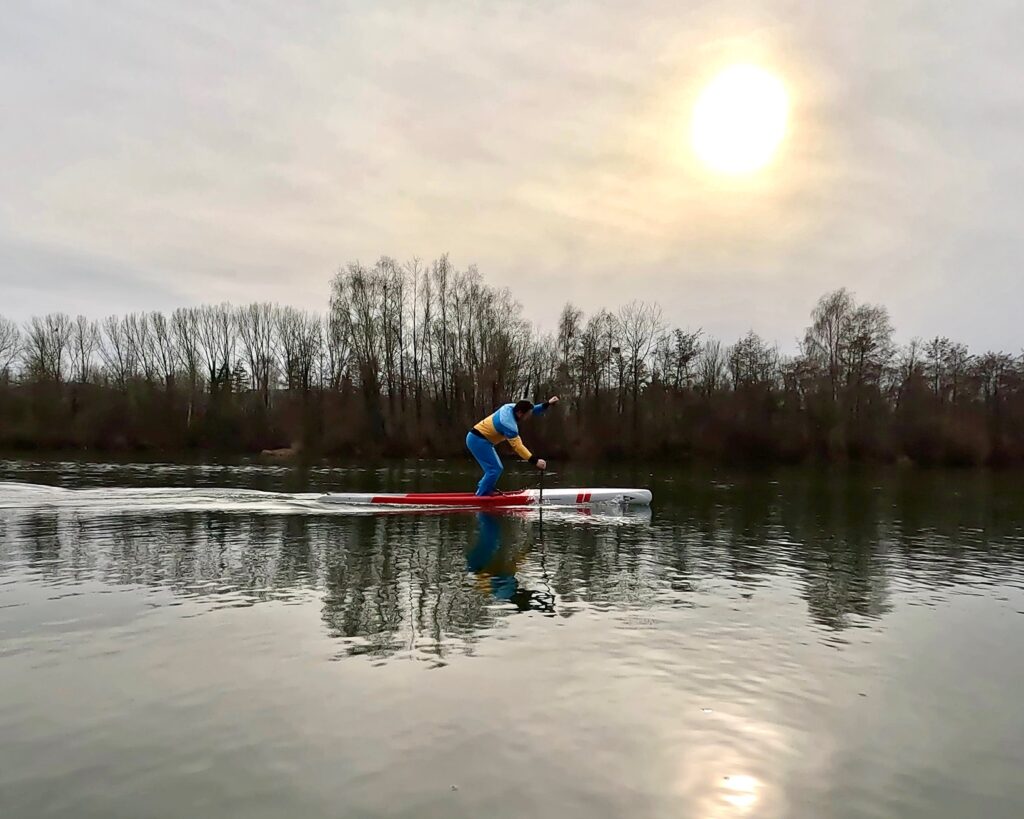
SIC Maui bringt nun nach zwei sehr erfolgreichen RS Modellen und dem Atlantis ein neues Raceboard auf den Markt, dass mit dem Zusatz T im Namen den Turbo beim RS zünden soll. Erste Fotos konnten ja bereits Ende 2023 gesichtet werden und diverse Teamrider paddelten in den letzten Jahren immer wieder eigenartig aussehende, in Atlantis-Farben gehaltene Prototypen. Nun ist es soweit und ich hatte die Ehre gemeinsam mit Rudy Van Haven einen Nachmittag mit dem SIC RST in meiner bevorzugten Größe 14×24,5 zu verbringen. Wem Nachrichten in einfacher Sprache lieber sind und wer generell seine Augen schonen möchte, findet am Ende des Artikels die Links zu meinen Youtube Videos des SIC RST.
Erster Eindruck
Schon die ersten Fotos des neuen Modells zeigten einige interessante Designfeatures die mir schonmal sehr gut gefielen. Die Nose hat deutlich an Volumen dazugewonnen und die Rails sind viel höher als noch beim Atlantis. Auch der Rocker schien stärker ausgeprägter zu sein und das scharfe V im Bereich der Nose versprach sinnvolle Verbesserungen.
Über die Optik lässt sich bekanntermaßen streiten und so bekam ich nach meinem ersten Post gemischte Rückmeldungen, viele Leute finden das Board modern und gutaussehend, andere wiederum vermissen den cleanen Look des ersten RS Modells.
Live gefiel mir das Board auf Anhieb sehr gut und auch der matte Lack macht einen hochwertigen Eindruck. Verarbeitungsfehler konnte ich auch bei genauem hinsehen nicht finden, die Qualitätsanmutung ist absolut top!
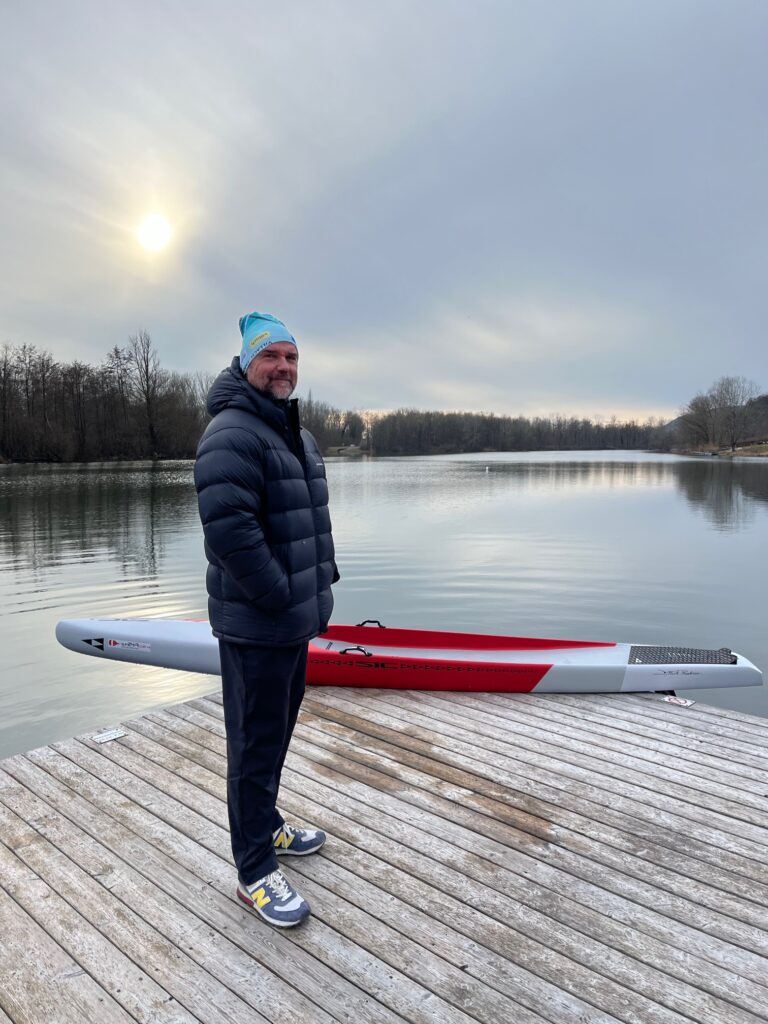
Shape & Ausstattung
Eine deutlich höher gezogene Nose im Vergleich zu RS & Atlantis sorgen in Kombination mit dem gemäßigten Rocker für eine gut nutzbare Wasserlinie bei meinen 100kg Körpergewicht. Das Heck im Stile des Atlantis, aber etwas schmäler gehalten, sorgt für einen sehr guten Wasserabriss. Die beim aktuellen RS auftretenden Turbulenzen gehören der Vergangenheit an. Mitunter ein Grund hierfür könnte der Entfall des Step-Channels sein, den man schon vom 2018/19 RS kannte.
Die Rails sind ab der Mitte des Boards bis zum Tail hin sehr scharfkantig. Richtung Nose verrundet das Unterwasserschiff sehr stark im Vergleich zu bisherigen SIC Raceboards und zeigt dadurch auch eine stärkere Rollneigung. Diesem Rollen steht allerdings ein enorm tiefer Standbereich gegenüber, welcher zu einem immer noch sehr einfachem Handling führt.
Das üppig ausgeführte Decknetz der RS & Atlantis Modelle durfte einer etwas abgespeckten Variante, mit “cleanerem Look” weichen. Gerade bei gelegentlicher Tourennutzung ist dieses Decknetz eine willkommene Zusatzausstattung.
Ein Gore Entlüftungsventil, als auch das vom XRS bekannte, sehr feste Laminat findet man samt neuer Grafik am RST wieder. FCS-Actioncam Mount ist auch wieder weit Richtung Nose positioniert und sorgt an dieser Stelle für eine tolle Perspektive, erfordert aber fast zwingend die Steuerung mittels Sprachbefehlen.
Nicht perfekt austariert aber perfekt zu tragen ist auch dieses SIC Modell mit dem bewährten, massiven EZ-Grab Handle.
Kurzum, Komplettausstattung… lediglich der Railsaver fehlt 😉
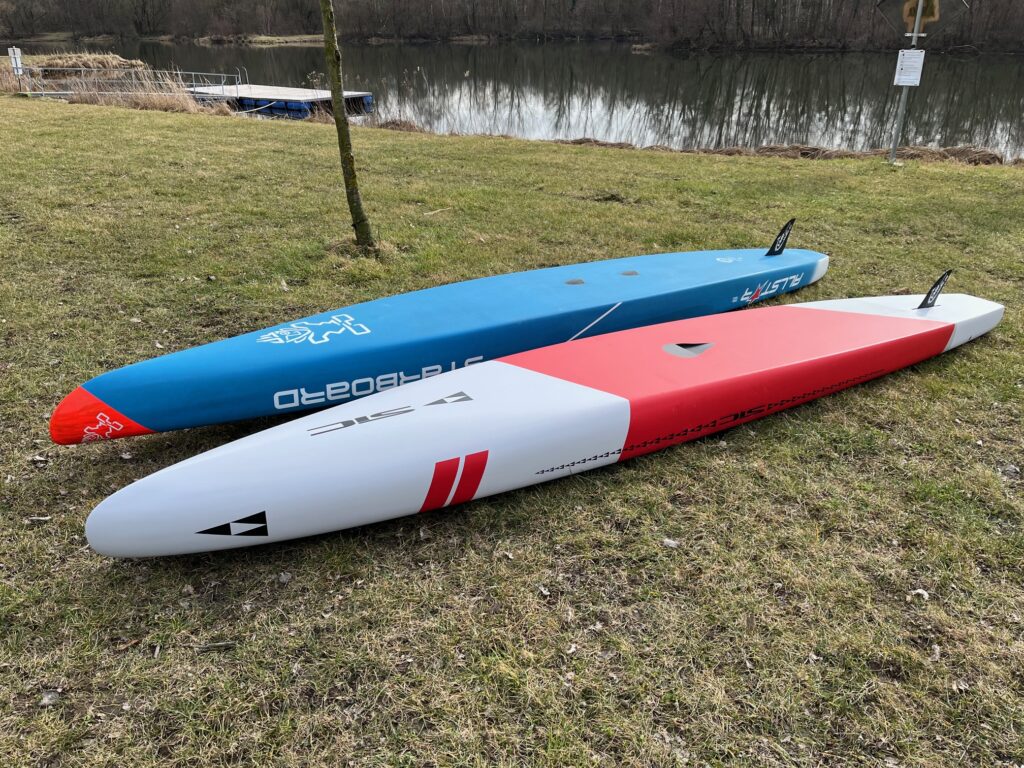
First Impression
Aufsteigen lospaddeln lautet und lautete schon immer die Devise bei SIC-Raceboards und das RST macht auch hier keine Ausnahme. Im Vergleich zum RS und besonders zum Atlantis verzeichnete ich aber doch ein verspielteres Handling, welches sich zwischen Atlantis und Starboard Allstar einpendelt. Selbst bei meiner Paddeltechnik mit starker Gewichtsverlagerung Richtung Nose tauchte das RST kaum ab und sorgte für das deutlich beste Gleitverhalten aller bisher gefahrenen SIC Bretter.
Wo Licht ist, ist bei über 100kg Körpergewicht und einem 24,5″ Board auch Schatten,- so merkte ich vor allem bei starker Belastung einer Seite, dass die hohen Seitenwände auch mal wegtauchen können. Ist das die Schuld dieses Boards? Nein… ich denke nur, dass die Größe entsprechend des anvisierten Einsatzbereiches gut gewählt sein sollte.


Bei Turns dreht das Board gefühlt besser als die RS Modelle, erfordert aber speziell bei meinem Gewicht einen flach gehaltenen Turn um die Wanne nicht zu fluten.
Das Venturi System kann mit kleinen Adaptierungen effizienter gemacht werden und gleicht größtenteils dem des Atlantis Modells.
Die ersten Zwischensprints gelangen unheimlich gut und selbst nach wenigen Metern würde ich mich umgehend an den Start eines 200m Sprintrennens wagen. Dabei hat das RST aber im Vergleich zum RS einen wesentlichen Vorteil, wenn die Kraft nicht mehr reicht um das Board im Gleiten zu halten, dann ist selbst mit langen kräftigen Zügen (lt. Garmin 48-49spm) ein Speed über 10km/h möglich. Beim RS ist hierfür deutlich mehr Kraftaufwand notwendig und das Board will geprügelt werden um schnell zu bleiben.


Vergleich Starboard Allstar 2023
Starboards Carbon Sandwich Konstruktion wurde im Laufe der Jahre mehrfach angepasst und belastungsoptimiert verändert. So merkt man beim RST eine gerade im Bereich der Nose deutlich bessere Druckfestigkeit. Die Verarbeitung von Deckpad über Rails, Nose und Tail ist in beiden Fällen vorbildlich.
Brother from another mother?
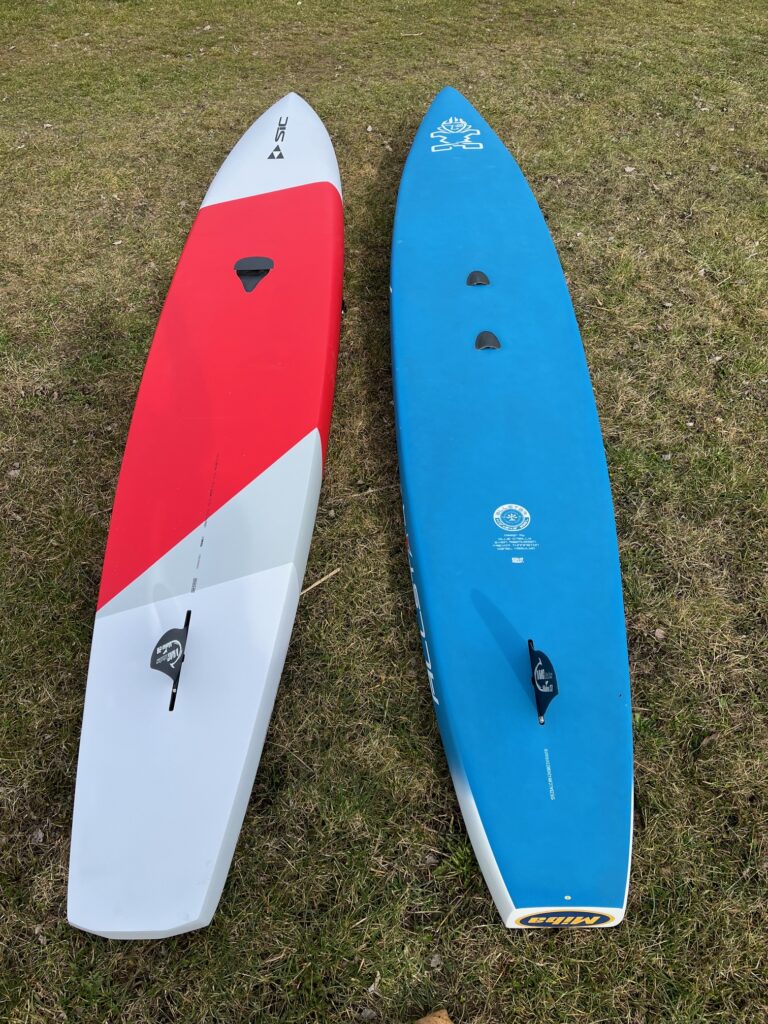
Ja und nein… die Boards unterscheiden sich doch deutlich und teilen bis auf die hohen Rails und das großzügige Volumen in der Nose nur wenige Gemeinsamkeiten. Im Sachen Glide kommt das RST verdammt nah ans Allstar ran, bietet aber die bessere Standsicherheit. Ich war die hohe Rollneigung des Allstars bereits gewöhnt und empfand daher das RST als sehr einfach zu paddelndes Board. Bei Turns, egal ob flach oder steil gehalten, langsam oder schnell war das Allstar im Vorteil. Das sehr schmale Heck und die verrundeten Kanten lassen das Allstar schnell drehen und wenn etwas Wasser an Deck kommt, funktioniert das Entwässerungssystem trotz des primitiv wirkenden Designs äußerst effizient.
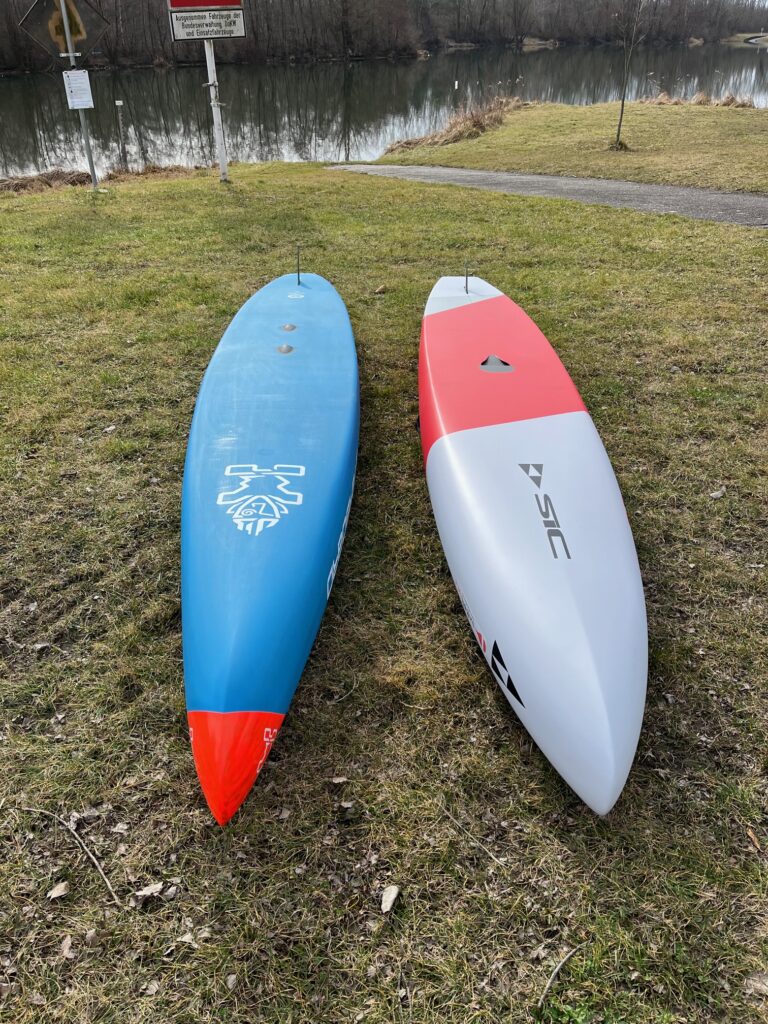
Bei Sprints mit hoher Zugzahl (>85) lag das RST deutlich ruhiger im Wasser und konnte auch problemlos im Gleiten gehalten werden. Das Allstar fordert hier den Paddler deutlich mehr und hat in diesem Vergleich auch eine geringere Endgeschwindigkeit erzielt.
Das Allstar benötigt eindeutig mehr Zeit, um mit den Fahreigenschaften vertraut zu werden. Beim RST würde ich persönlich ein 26″ Modell wählen und damit einen Do-it-all Allrounder kaufen. Wer das SIC RST mit all seinen Vorzügen in 24,5 nutzen möchte, sollte sich vermutlich in der 80-90kg Gewichtsklasse bewegen.
Beim Allstar kommt auch bei knapp über 100kg gerade noch kein Wasser auf’s Deckpad und schon bei geringen Geschwindigkeiten wird das Wasser auf 3-4cm unter Deckhöhe abgesaugt. Dennoch merke ich auch hier, dass das obere Gewichtslimit erreicht ist und der ideale Einsatz auch bei ca, 95kg endet.
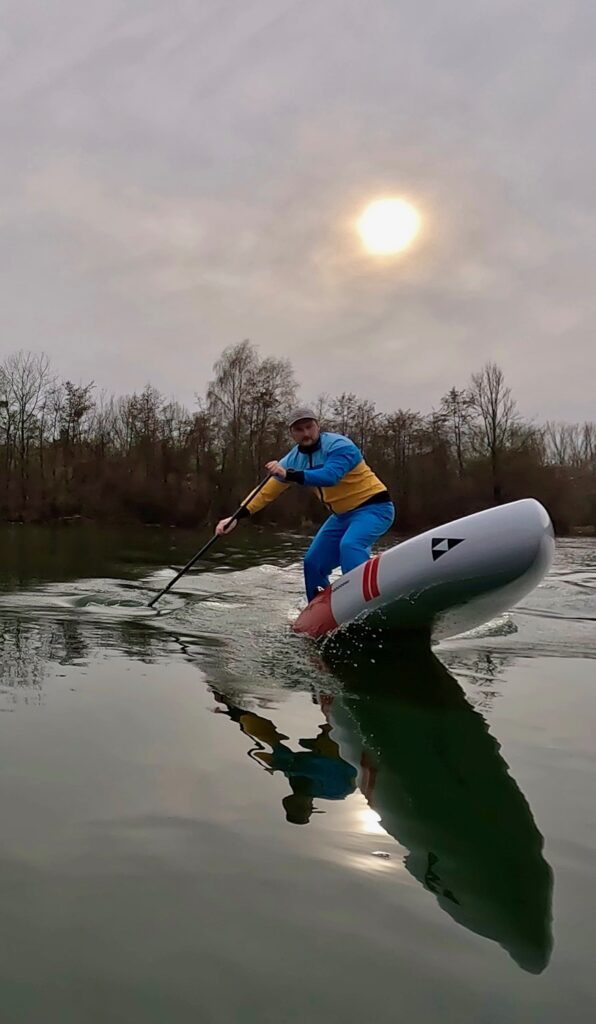
Komplettausstattung und massive Bauweise
War noch mein 2019-er RS 24,5 bei 11,7kg und selbst das 2023-er RS bei exakt 12kg, so bringt das RST 13,17kg inkl. VMG Mako 28 Finne auf die Waage. Beim Allstar ist ein RS Pro Jumbo Railsaver und der 150g wiegende Deflector angebracht und auch hierbei blieb die Waage bei 13,3kg stehen. Mich persönlich stört das höhere Gewicht garnicht und beim anpaddeln fällt das auch nur im Vergleich zum ersten RS auf.
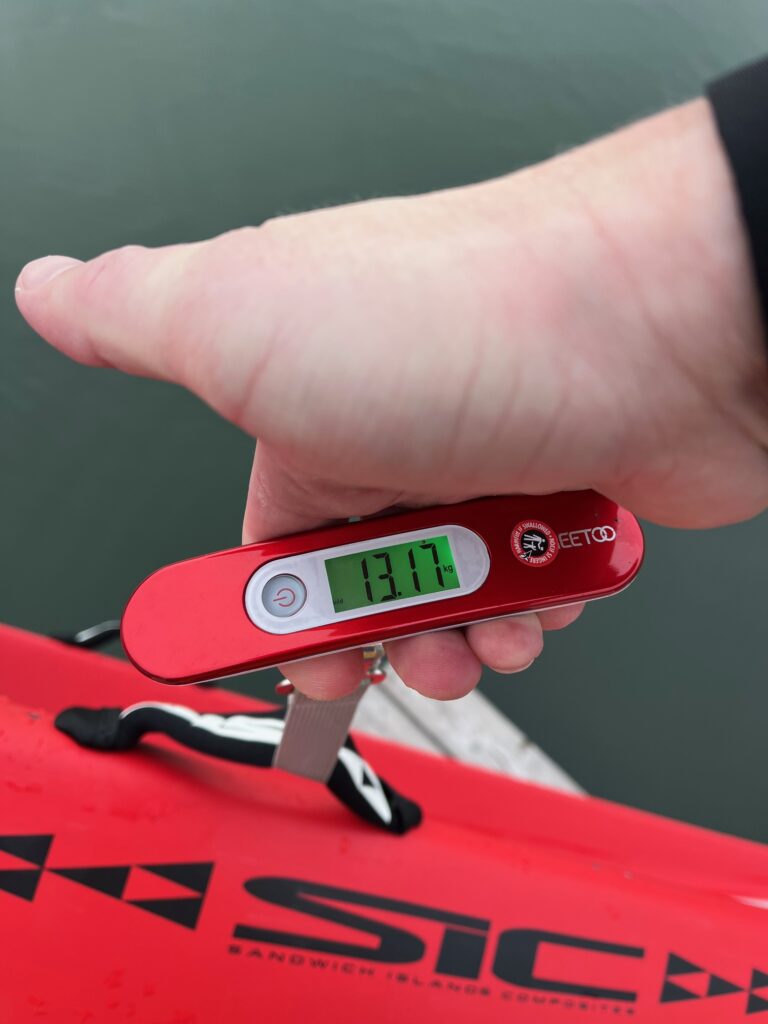
Mein größter Kritikpunkt an beiden RS Modellen war stets die mangelnde Steifigkeit und der beim neuen RS zu flache Rocker, was bei geringeren Reisegeschwindigkeiten zu einem verhältnismäßig hohen Kraftaufwand führte.
Das RST läutet hierbei endlich die Trendwende ein und lässt hierbei keinen Raum mehr für Kritik. Bocksteif und eine ausreichend breite Standfläche, welche dennoch 5cm schmäler ausfällt als beim Allstar, führen bei meiner Körpergröße zu einer äußerst komfortablen Paddelposition.
Fazit
SIC Maui ist mit dem RST meiner Meinung nach erstmals seit dem 2018-er RS wieder ein richtig großer Wurf gelungen. Ich empfehle das Board unbedingt in verschiedenen Breiten beim Händler eures Vertrauens zu probieren. Es wird erfahrene SIC Fahrer etwas mehr fordern in der jeweiligen Dimension, belohnt dafür aber mit besserem Glide und der nach wie vor komplettesten Ausstattung die man sich von einem Board wünschen kann.
Bevor’s zu den Videos geht…
An dieser Stelle einen herzlichen Dank an Move Mike, für die Testmöglichkeit! Rudy mit über 110kg und ich mit >100kg repräsentieren nicht den durchschnittlichen Racepaddler, sehr wohl aber eine gewisse Kundenschicht die zwar sportlich ambitioniert, aber nicht auf Elitelevel paddelt. Die Anforderungen sind unterschiedlich und gerade bei breiteren Raceboards sollten auch Kunden im oberen Gewichtsspektrum berücksichtigt werden. Hierbei will ich mit meinen Erfahrungen einen Beitrag leisten, realistische Erwartungen abseits der Werbeversprechen einordnen zu können.
